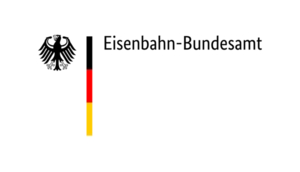Wagon Material for the European Overnight Rail Traffic of Tomorrow.
Background
Night trains are a sustainable alternative to air traffic. The ecological balance of trains is particularly good when they are fully occupied, or, in more technical terms, when the maximum number of passengers are transported with the energy required for operating a train. As a consequence, expanding rail traffic while ensuring maximum capacity utilization is an important measure when it comes to achieving climate goals. Many countries' responsible officers are already taking steps in the right direction, but to push the efforts even further, close collaboration with the EU and concerted action on part of all member states are needed. Moreover, there is still a lack of sufficiently attractive wagon material for needs-based overnight rail traffic on the European level that allows for cost-effective operation. Though it has already been investigated how night train networks could look like and which groups of persons would be their primary users, there is nevertheless need for further research – especially with regard to wagon material.
Project Content
There are already a number of cross-border passenger night train offers connecting Europe's major urban centres. Furthermore, in the coming years, a diverse array of vehicle types, encompassing both older and newer trains, each equipped with distinct features, will come into operation. This situation creates excellent conditions for scientific investigations, enabling comparative and meaningful measurements. Questions such as how well-suited specific train car features are for overnight operation, in which way improvements can be achieved, and how different conditions affect passenger satisfaction can be answered. What is more, the studies can be carried out in real time, which increases the validity and reliability of the knowledge gained.
Objectives
The project's main goal is to lay the groundwork for modern sleeping, seating, and couchette cars. Special emphasis is being placed on obtaining European-wide approvals for the wagon models, as well as achieving the best possible combination of comfort and affordability. The project is not only geared toward the needs of average travellers, but it also takes the special needs of people with physical limitations into account.
Methods and Milestones
The project is divided into the following sub-steps:
- First, the project team take stock of the European wagon fleet of sleeping and couchette cars. To do this, they collect the data of sleeping/couchette/seating cars as well as restaurant and multi-functional wagons and compile it in the form of a profile.
- Key information from the regulations governing the construction and operation of internationally active night trains is identified. Building on that a catalogue of requirements is created that merges the conditions and regulations of various countries.
- A historical classification of today’s sleeping and couchette inventory and its management for the period from 1949 to 2016 is carried out. The focus is on the organisation of construction, operation, maintenance, on the services offered and the rules that have been applied.
- What measures can be taken to ensure healthy and restful sleep during an overnight train ride? We draw up a catalogue of disruptive factors that negatively influence the quality of sleep, and a second catalogue listing countermeasures that help to improve quality of sleep.
- Measures for a needs-based vehicle design from the perspective of travelers are being developed. Factors such as travel purpose (e.g., vacation or business trip), group structure (e.g., families or single travellers), and individual needs (e.g., persons with physical restrictions) are taken into account and recommendations for equipment changes are formulated.
- New vehicle concepts are developed that can live up to the aforementioned requirements. This includes interior design as well as other vehicle structures (e.g., to achieve smoother running).
- The possibilities of establishing high-speed overnight rail links are sounded out. It is clarified which framework conditions need to be met (operational structures, financing), and whether the wagon material currently in use could be adapted for overnight travelling.
- Template specifications for European seating, couchette, and sleeping cars are compiled. These documents define both the necessary equipment elements and recommendations for fundamental wagon characteristics (taking approval capability into consideration).
You want to know more? Feel free to ask!
Academic Director Rail Technology and Mobility (BA)
Head of Research Institute
Carl Ritter von Ghega Institute for Integrated Mobility Research
Deputy Academic Director Rail Technology and Management of Railway Systems (MA)
Department of Rail Technology and Mobility
- Netwiss (lead)
- TU-Wien (Institute für Verkehrswissenschaften und Mechanik)
- Züricher Hochschule für angewandte Wissenschaften/Verkehrssysteme [Switzerland]
- Siemens Mobility Austria
- Skoda Austria
- Elisabeth Oberzaucher
- noicon
- Rodlauer Consulting
- moodley design
- Institut für Schlaf- und Wachforschung


